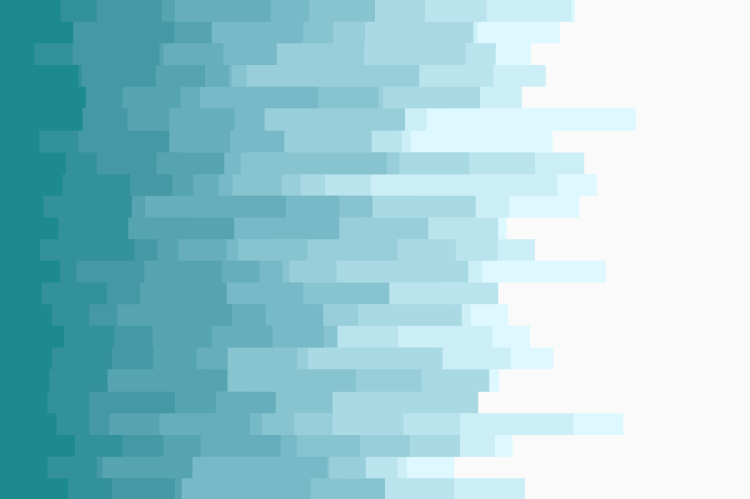Introduction
July 5, 2025. This date has been whispered across social media and news outlets as a kind of “fated day.” The origin: a dream reportedly seen by manga artist Ryo Tatsuki, later published in her book The Future I Saw: Complete Edition. In it, she describes a vision of a massive undersea eruption triggering a tsunami even greater than the one that struck Japan in 2011.
But is this really a “prophecy”? And more importantly, why are so many people drawn to it?
This article is not about predicting the future. Rather, it is an attempt to examine the present. Our fears, our desires, and our tendency to offload responsibility, through the lens of prophecy.
A Society That Clings to Prophecy, and the Crowd That Shifts Blame
“If it comes true, they’re a god. If it doesn’t, they’re a fraud.” Public reactions to prophecy are often shockingly simple and disturbingly extreme.
Ryo Tatsuki has repeatedly stated that what she saw was “just a dream,” not a prophecy. And yet, people project meaning onto it, entrust their futures to it, and when nothing happens, turn their disappointment into anger.
This isn’t just occult curiosity. It’s a reflection of something deeper. A society that externalizes responsibility in times of fear and uncertainty.
The Crowd’s Desire to Believe
We live in an age of unpredictability. Disasters, wars, economic instability. In such times, the idea that “someone knows what’s coming” becomes deeply comforting. If the future is knowable, then perhaps it’s also survivable.
It’s easier to believe that “someone else already knows” than to admit that no one does. And if someone else has already seen the future, then we don’t have to think too hard about it ourselves.
In other words, belief in prophecy is often a shortcut, a way to avoid thinking, and a way to hand off responsibility.
This desire to believe isn’t unique to Japan. From Nostradamus in 16th-century France to Baba Vanga in 20th-century Bulgaria, from the Mayan calendar’s 2012 doomsday to the Hopi prophecy of the Blue Star Kachina, history is filled with examples of people turning to “those who know the future” in times of uncertainty.
Nostradamus’s cryptic verses have been endlessly reinterpreted to fit modern fears, while Baba Vanga’s oral predictions have taken on a kind of mythic status, passed down and embellished over time. The Mayan calendar’s reset was widely misread as a literal apocalypse, sparking global panic and a wave of end-times media. Meanwhile, the Hopi prophecy has been revived in recent years as a spiritual warning about environmental collapse and humanity’s disconnection from nature.
What all these have in common is this: they offer temporary relief from the weight of the present. But that relief is often an illusion. And illusions, when broken, tend to provoke rage.
Who Bears the Burden of Belief?
When a prophecy fails, what happens to those who believed? More often than not, their anger turns toward the one who spoke it.
Rarely does anyone say, “I was wrong to believe.” Instead, they say, “I was deceived.”
This isn’t limited to prophecy. We see the same pattern in politics, economics, even medicine. The desire to believe and the refusal to take responsibility, these twin impulses are laid bare in our relationship with prophecy.
Why People Believe in Prophetic Dreams and Look Away from Reality
“It’s ridiculous to believe that,” some might say. But the widespread appeal of prophetic dreams and conspiracy theories can’t be explained away by ignorance alone. There’s a deeper psychological logic at work.
Why do people gravitate toward unverifiable dreams and rumors? Because reality is too complex, too heavy, and too unstable to face head-on.
Information Overload and the Shortcut of Belief
We are drowning in information. News, social media, expert opinions, conspiracy theories, ads, AI predictions… each one claiming to be “the truth.” And in this flood, our ability to think critically is slowly eroded.
When overwhelmed, people grow tired of thinking. And in that exhaustion, they begin to crave simplicity. Clear, digestible stories that make sense of the chaos.
Prophetic dreams offer exactly that. They compress the complexity of the world into a single, vivid narrative. They make us feel like we understand something without having to do the work of understanding.
Belief as a Form of Psychological Self-Defense
Believing in a prophetic dream isn’t just entertainment. It’s a way to externalize fear and protect the self.
If the world is dangerous, then maybe it’s not my fault I feel anxious.
If the dream already told us what’s coming, then I don’t have to decide anything for myself.
In this way, belief becomes a coping mechanism, a way to transform helplessness into a sense of preparedness. It’s not about truth. It’s about emotional survival.
When Stories Beat Science
Scientific explanations are often cold, complex, and emotionally unsatisfying. Prophecies, on the other hand, offer stories that feel meaningful.
Ask science, “Why did this happen?” and it might say, “Chance,” or “A complex chain of causes.” Ask a prophecy, and it says, “It was foretold.”
That difference is everything. People don’t just want explanations, they want narratives that make sense of their feelings. And if a story fits, they’ll believe it. Even if it’s false.
When Prophecy Becomes Entertainment and Who Pays the Price
Prophecy is no longer sacred. It’s content. It’s clickbait. It’s a product.
What was once whispered in temples is now plastered across YouTube thumbnails and trending hashtags. And behind it all is a system that spreads and sells prophecy for one reason only: because it gets attention.
The Marketplace of Prophecy
In today’s media landscape, accuracy is no longer the highest value. What matters is reach. And in that economy, prophecy is a perfect commodity: vague, dramatic, and impossible to verify.
We see it everywhere. Falsehoods spread faster than corrections. Outrage outperforms nuance. “Boring but true” gets buried, while “wrong but exciting” goes viral. In this environment, prophecy thrives not as belief, but as entertainment.
Vague, provocative, and unverifiable. These are the very qualities that make prophecy irresistible to the media. It doesn’t need to be true; it only needs to be clickable. So the media picks it up, social networks amplify it, and audiences consume it. A phrase like “Something might happen on July 5, 2025” doesn’t need to be factual. If it’s scary, intriguing, or likely to go viral, that’s more than enough. And so prophecy circulates as content.
Selling the Future, One Dream at a Time
The success of The Future I Saw: Complete Edition is no accident. Publishers leaned into the narrative that “she predicted 2011,” and marketed the next dream as a sequel. Even as the author insisted, “This is not a prophecy,” her voice was drowned out. Because “prophecy” sells better than “dream.”
The real question isn’t whether people are foolish to believe. It’s whether those who profit from belief bear any ethical responsibility. They stoke fear, reap attention, and when nothing happens, they shrug and walk away. In this system, the burden always falls on the believer, not the seller.
The Individual Who Bears It All
And perhaps the cruelest part of all: One person ends up carrying the weight of both public hope and public fury. Ryo Tatsuki may have simply recorded a dream. But once that dream was labeled a prophecy, she became “the one who knows the future.” And if nothing happens, she becomes “the one who lied.”
This isn’t prophecy. It’s a modern witch hunt.
Conclusion
Prophecies don’t reveal the future. They reflect the present.
What will happen on July 5, 2025? No one knows. But the more important question is: Why do we care so much?
In uncertain times, it’s natural to want someone to tell us what’s coming. When reality is overwhelming, it’s tempting to retreat into simple stories. But in doing so, we often surrender our ability to think and our willingness to take responsibility.
And when the prophecy fails, we lash out. Not just at the prophet, but at the part of ourselves that believed.
Prophecies don’t show us what’s ahead. They show us who we are now: anxious, overloaded, and desperate for meaning.
So perhaps the real task isn’t to fear the future. It is to face the present. Instead of asking “What will happen?” ask, “What am I doing now?”

